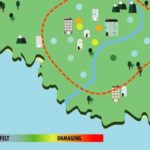 Earthquakes are devastating events, but the ability to predict them allows communities to prepare and buffer the impact to some extent. I’ve written previously about AI-driven approaches to earthquake monitoring that aim to provide such predictive capabilities, but recent research from the European-Mediterranean Seismological Centre (EMSC) in France highlights that this is by no means the only innovation in the space.
Earthquakes are devastating events, but the ability to predict them allows communities to prepare and buffer the impact to some extent. I’ve written previously about AI-driven approaches to earthquake monitoring that aim to provide such predictive capabilities, but recent research from the European-Mediterranean Seismological Centre (EMSC) in France highlights that this is by no means the only innovation in the space.
They propose that crowdsourced data from Internet users can significantly help to speed up the detection of earthquakes, with data including the depth, magnitude and epicenter location all possible to be gleaned from the crowd.
The team propose a system that combines official data from seismic networks with that presented by people actively looking for information on specific websites, Twitter or the LastQuake app developed by the team. They believe that this dual approach allows them to significantly reduce the time required to detect and locate earthquakes.
Detecting earthquakes
The software currently used to detect earthquakes is usually able to do so within between 3-8 minutes of the quake happening. This data is then shared both online and with partner organizations. Whilst this is fairly swift, the researchers believe that their new method allows them to get the detection time down to between 1-3 minutes. This is largely because of the speed with which people head online to try and find information about the quake they just experienced.
This spike in earthquake related traffic can be detected, with geotagging then used to identify the approximate location of the earthquake. By combining this with official seismic data, it allows for both highly accurate and extremely quick detection of earthquakes.
It’s an interesting project, and you can learn more about it via the video below.